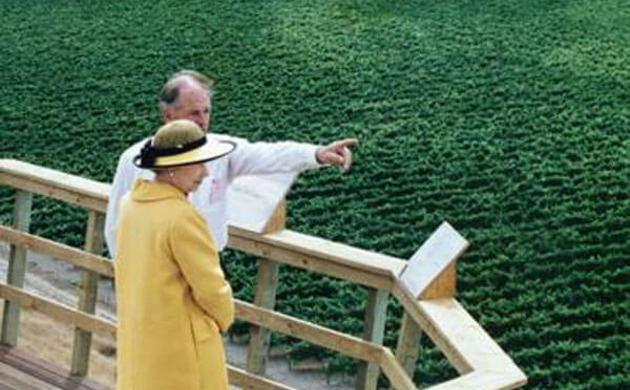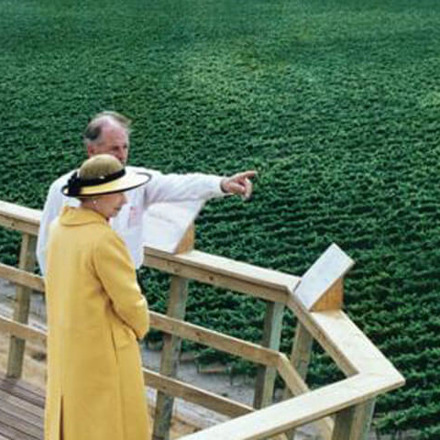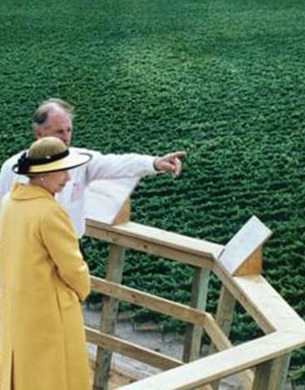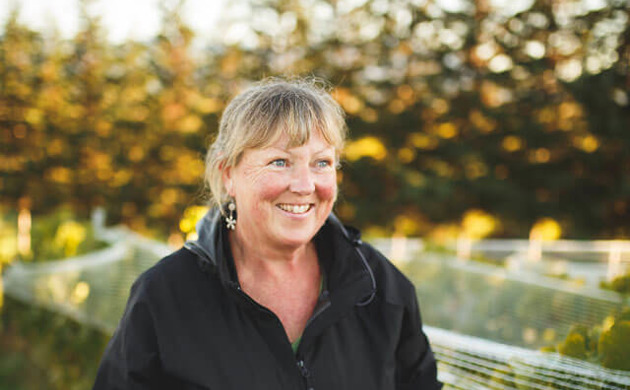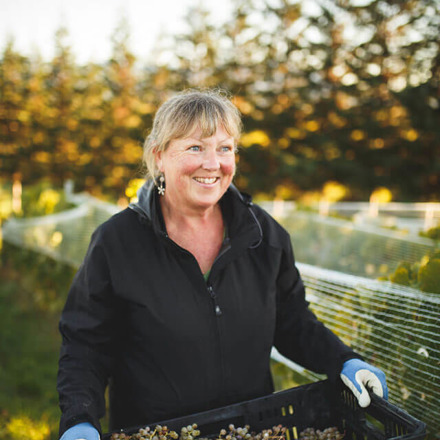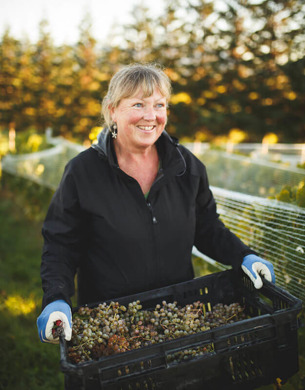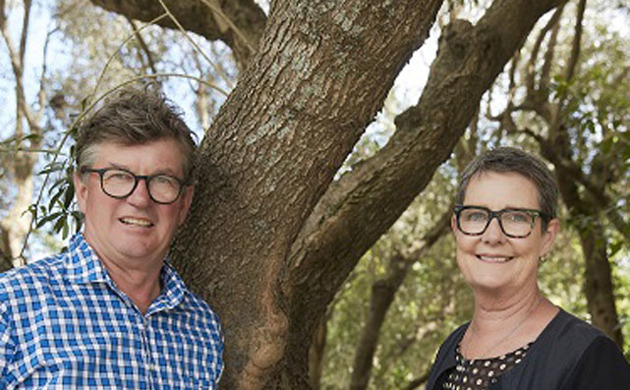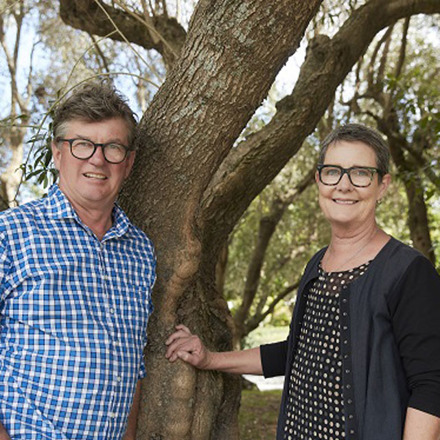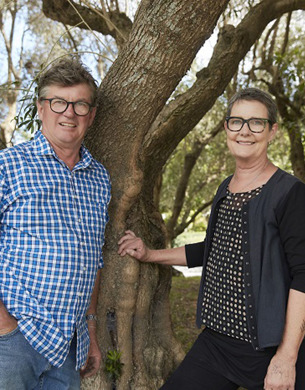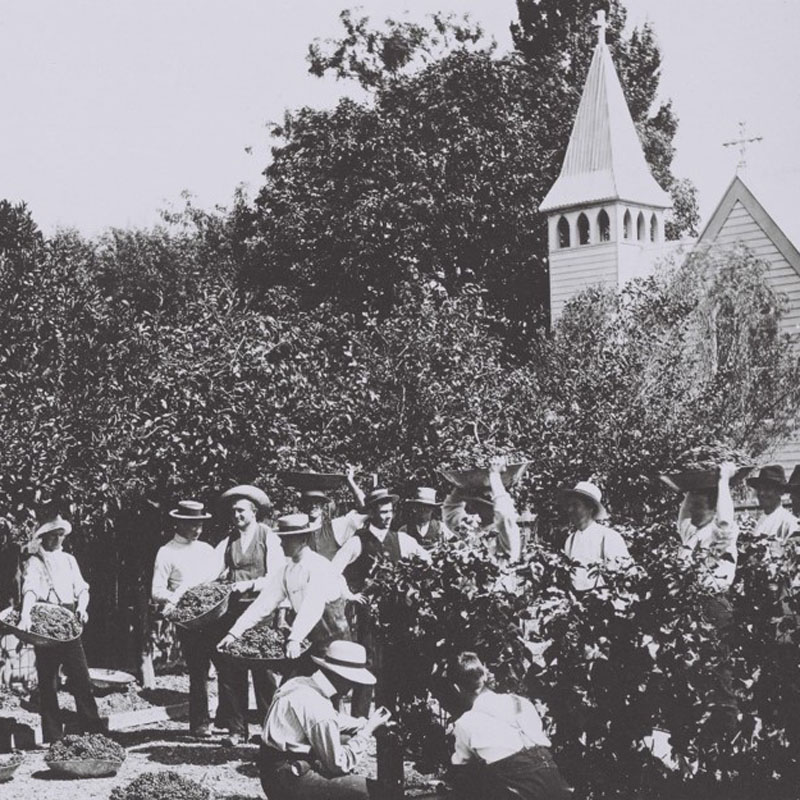
The story begins in 1838 when a group of French Missionaries set sail to New Zealand with little more than their faith and a few vines. Successfully landing in Hawke’s Bay in 1851, the Fathers established a mission station at Pakowhai, near the Ngaruroro River, and there they followed the tradition of running a balanced farm property with fruit trees, cattle and a vineyard.
When war broke out between rival Maori tribes, the French Missionaries moved from their original site to a new location in Meeanee. The move was completed in 1858, and in the following years, they became central to the community that built up around them. A cottage for living quarters was transported from Pakowhai and later a church, school and study halls were built.
Vines were planted to create both sacramental and table wine, to continue their wine-drinking tradition, as well as contributing revenue through wine sales to support the community.
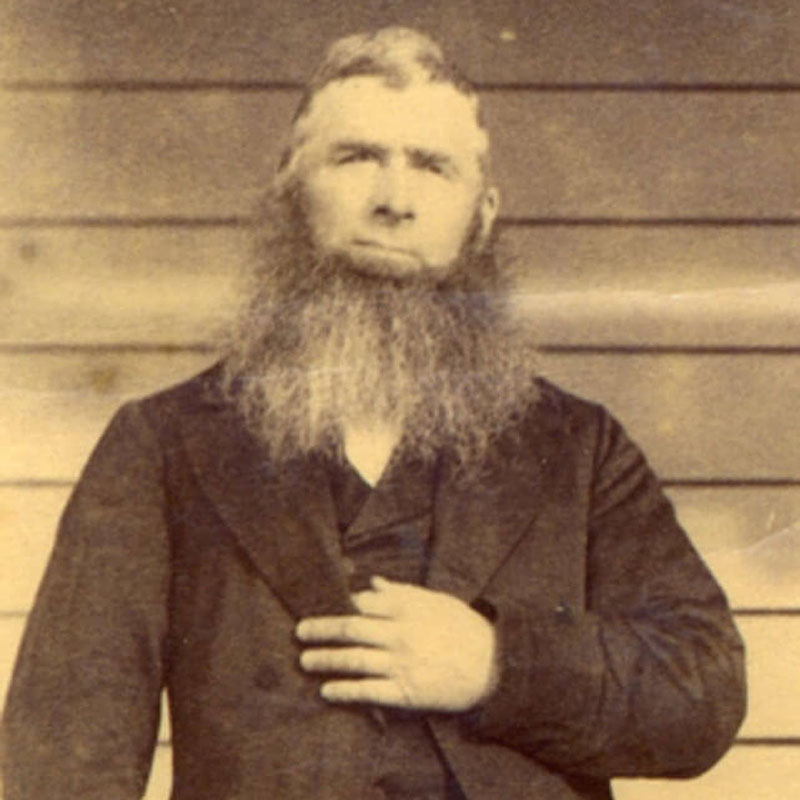
In 1870, Brother Cyprian Huchet, the trained winemaker from the Loire Valley rose to the exalted position of Mission Estate Cellar Master and oversaw New Zealand’s first recorded commercial sale of wine. He was one of New Zealand’s first qualified winemakers and his knowledge became extremely sophisticated.
“Brother Huchet introduced a press house, a grape crusher, achieved New Zealand’s first International medal at the Paris Wine Awards 1889, and he was also responsible for extending the commercial sale of wine at Mission in the late 1800s. He remained in charge of the vineyards and cellars until his death in 1899.”
Today, Mission Estate’s most premium range of wine is named after Brother Huchet who instilled the wealth of knowledge that lives on at Mission Estate today. Chief Winemaker Paul Mooney says, “the wines in the Huchet range today are only made in the finest vintages and are an exceptional tribute to one of New Zealand’s pioneering winemakers.”
La Grande Maison
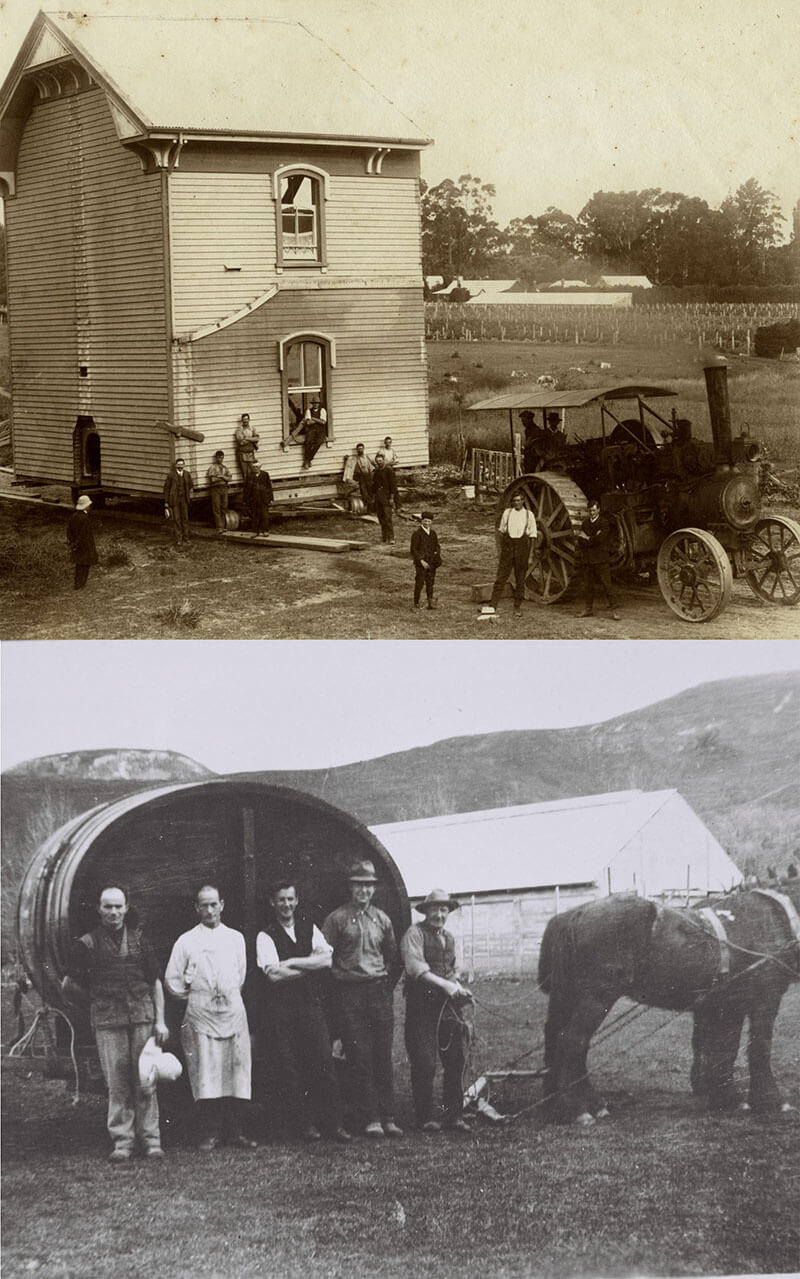
In 1880, a new two-storied house costing £2020 and 10 shillings were built. It was known as La Grande Maison and became the home for the early French Marists for three decades.
Following a disastrous flood, it was soon realised that the land it was built on was less than ideal, so in 1909 Father Smythe decided to move the Mission community to the present site at Greenmeadows. The Mission building was cut into eleven sections and rolled on logs and pulled by traction engines. The five-kilometre journey took two days.
In 1930, the winery began building a three-story concrete accommodation block. On February 2 1931, some students moved into the new building. The next morning February 3, 1931, at 10.47 am, an earthquake measuring 7.9 on the Richter scale struck Hawke’s Bay causing serious damage to the region and the entire Mission. Two priests and seven students who were meditating in the stone chapel were killed when it hit.
Mission has never lost sight of its French heritage, as over the years, Brothers of the Order have travelled to France to study and learn viticulture and winemaking skills. Paul Mooney trained with Brothers who had trained in Bordeaux, France, strongly influencing Mission Estate’s wine style today.
Mission Estate was the first New Zealand winery to use the traditional French techniques of whole bunch pressing and barrel fermenting Chardonnay back in the 1980s and long before other NZ wineries. These are now widespread techniques employed across New Zealand.
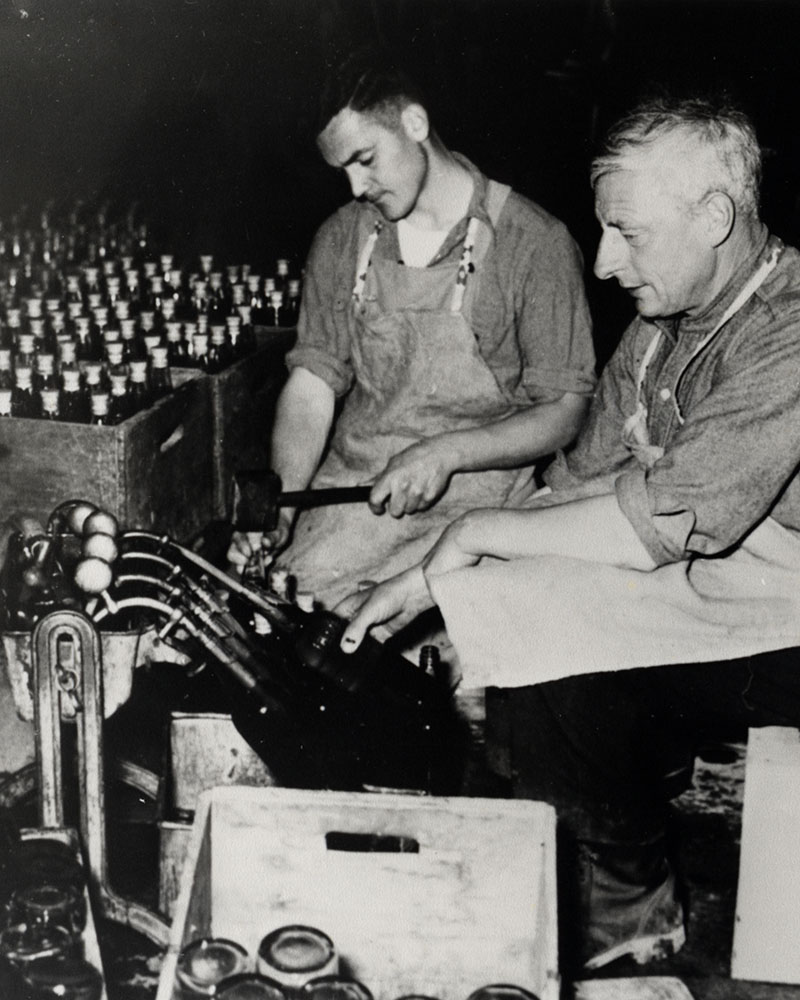
It was also the first winery to make sparkling wine using the Methode Traditionelle technique – learned directly from France. Brother John Cuttance first started experiments in 1961 to make a bottle-fermented sparkling wine, releasing the first one, named Fontanella in February 1963. The Rector of the Mission at the time, Fr Kelly S. M. coined the name, “Fontanella, it reminds me of the little fountains I saw in Rome”.
This year marks Paul Mooney’s 40th vintage. Paul is training the next winemaking generation, Alex Roper, who has worked at Mission since 2007 and through this time has also gained his winemaking qualification at EIT.
The winery’s history does influence the way they work today. Paul explains, “When French Marist brothers established the Mission Station, they followed the tradition of running a balanced farm property – fruit trees, cattle and a vineyard."
"The philosophy behind this holistic approach and the care for the land, community and people has continued to be a strong theme within Mission Estate from these early days.”
“Over time and with innovative thinking and continuous improvement (before these were even things) from the Marist brothers it has strongly impacted who we are today and the winemaking and viticultural methodologies we employ.”
The next 150 years
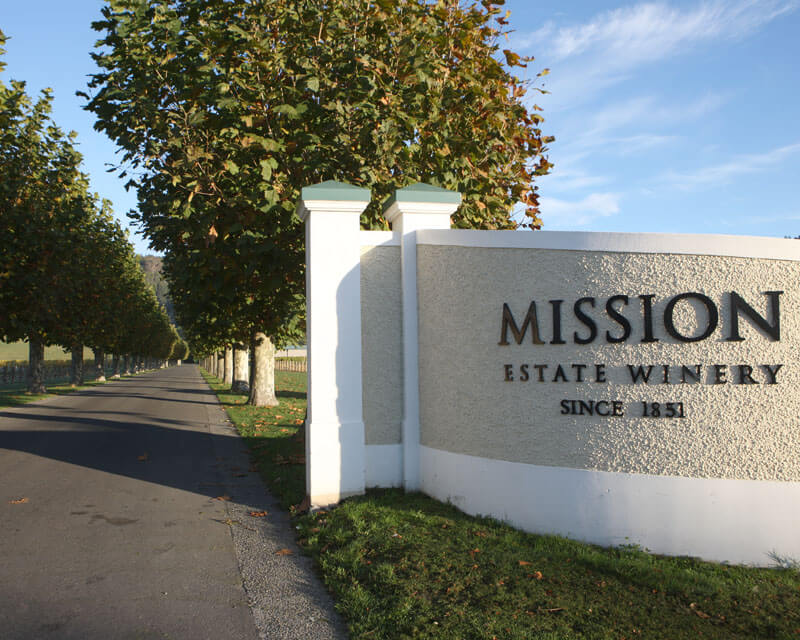
Having weathered earthquakes and floods in its long history, what does Mission Estate see for the future of New Zealand wine over the next 150 years? Firstly, Paul sees sustainability playing a strong role.
Mission Estate has been committed to the industry standards of sustainability for over twenty years. They were 100% Sustainable Winegrowing NZ certified since the programme’s inception in 1995 and ISO 14001 certified since 1998. This is an international standard that specifies requirements for an effective environmental management system.
In 2007, Mission Estate went a step further, rebuilding the winery to become one of New Zealand’s most energy-efficient whilst undergoing a major extension. “With virtually no usage of fossil fuels and electricity being 80% sustainable in NZ, we have a very low carbon footprint.”
The production facility has been designed to deliver maximum energy and water efficiencies – a vital element in their ongoing commitment to the environment. The winery is currently trending towards 1 litre of water per litre of production (the industry average is 5 litres).
Mission Estate has a few vineyards organically certified and more underway in the three-year conversion process. They were involved in the Organic Focus Vineyard project, comparing organic to conventional growing and management methods.
“With a heightened awareness and desire from consumers of environmentally responsible practices, sustainability and even organics, there will be a continuation and strengthening of environmental practices already employed, as well as better communication from wineries around what they are doing,” says Paul Mooney. “New Zealand has a strong global position around sustainability so this will continue to strengthen.”
And what will New Zealand be planting?
Paul names 1983 as a vintage that stands out over the past 150 years because the el Niño weather pattern with a warm dry season offered a glimpse into the future of Hawke’s Bay wine at the time.
"It heralded the introduction of varieties such as Merlot and Chardonnay (which we barrel fermented for the first time). The crop loads were quite high; however, due to the great weather conditions, there was great fruit maturity."
“It gave a glimpse of what Hawke’s Bay was capable of achieving and encouraged the development of vineyards in new areas more suitable for viticulture, including the Gimblett Gravels and the Ngatarawa Triangle.”
Paul sees a mix of varieties gaining importance as New Zealand’s reputation as a premium wine producer develops internationally. “Globally, anecdotally we’re seeing a (very) small increase in the demand of varieties other than Sauvignon Blanc, as the New Zealand brand name and awareness of New Zealand as a wine producer grows. Hopefully, this will continue and in the long-term New Zealand wine companies can sell a broader mix of varietals overseas.”
Although we’re celebrating the 200-year anniversary since vines were planted in New Zealand this year, it's still early days compared to Old World wine regions.
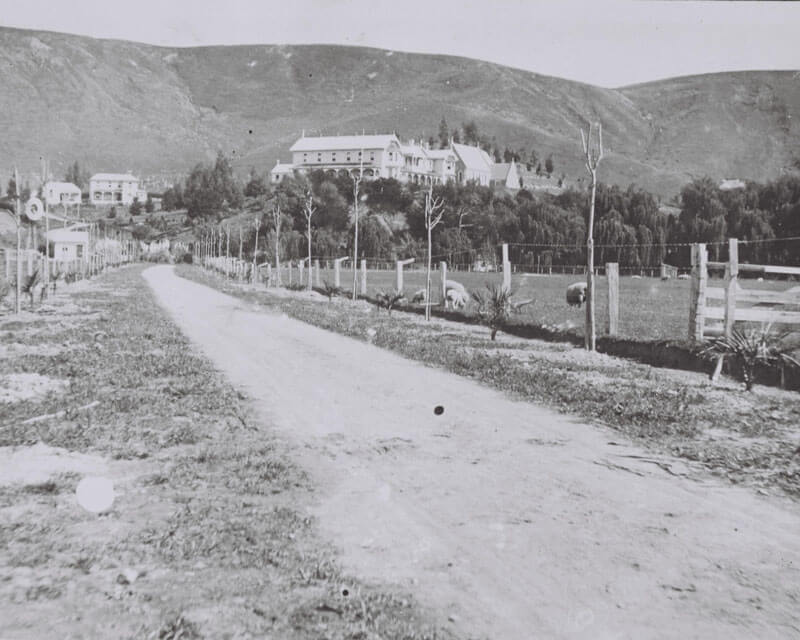
“Overall, we’ve come a long way in winemaking and viticulture in a short period of time. In the last 10-15 years, we’ve made significant progress, our wines are getting better and vineyards older, and our winemakers and viticulturists more experienced. We have more knowledge around what varieties and clones are successful across our regions, how to manage them, through further trials and innovations this continues to improve, resulting in our wines getting better and better across the board.”
If visiting La Grande Maison of Mission Estate, as you follow the driveway, there is a snapshot of 1838 still very much alive. One row of Muscat grapes that were grafted over the years from the very original stock brought to Futuna Island by the Marist Father Saint Peter Chanel. One wonders what they would’ve thought, had they known their legacy was going to continue as Mission Estate today and well into the future.




